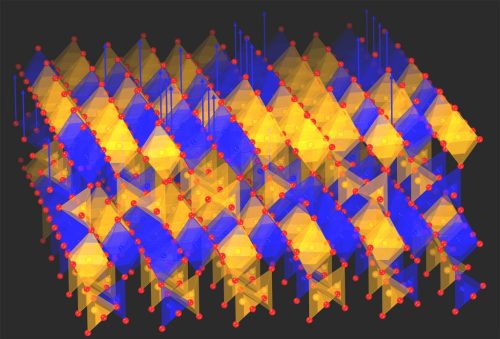An international research team led by Prof. Hyoungjeen Jeen (Department of Physics, Pusan National University) has published a groundbreaking paper entitled “Selective reduction in epitaxial SrFe0.5Co0.5O2.5 and its reversibility” in Nature Communications. Dr. Gowoon Kim (OG, Laboratory of Functional Thin Film Materials, RIES) and Prof. Hiromichi Ohta (RIES) also contributed to this work.
Since March 1, 2024, a Memorandum of Understanding (MoU) has linked the Department of Physics, College of Natural Sciences, Pusan National University (South Korea) and the Research Institute for Electronic Science (RIES), Hokkaido University (Japan). This research achievement is expected to further strengthen their collaboration.

Original article
Joonhyuk Lee, Yu-Seong Seo, Krishna Chaitanya Pitike, Gowoon Kim, Sangkyun Ryu, Hyeyun Chung, Su Ryang Park, Sangmoon Yoon, Younghak Kim, Valentino R. Cooper, Hiromichi Ohta, Jinhyung Cho, and Hyoungjeen Jeen*, “Selective reduction in epitaxial SrFe0.5Co0.5O2.5 and its reversibility”, Nature Communications 16, 7391 (2025). Published August 15, 2025. DOI: 10.1038/s41467-025-62612-1
International Joint Press Release
https://www.global.hokudai.ac.jp/news/23220
The newly developed material is a unique metal oxide composed of strontium, iron, and cobalt. Remarkably, it can release oxygen when heated in a simple gas environment and then reabsorb it, all without structural degradation. This process can be repeated many times, making it ideal for real-world applications.
Controlling oxygen in materials is crucial for technologies like solid oxide fuel cells, which produce electricity from hydrogen with minimal emissions. It also plays a role in thermal transistors—devices that can direct heat like electrical switches—and in smart windows that adjust their heat flow depending on the weather.
Until now, most materials capable of this kind of oxygen control have been too fragile or required extremely harsh conditions, such as very high temperatures. This new material works under milder conditions and remains stable. The research team also showed that the material could return to its original form when oxygen was reintroduced, proving that the process is fully reversible. This unique capability could transform the development of next-generation clean energy technologies, including fuel cells, energy-efficient windows, and smart thermal devices.










